Vision 2025 - National Research Centre for Grapes
Vision 2025 - National Research Centre for Grapes
Vision 2025 - National Research Centre for Grapes
Create successful ePaper yourself
Turn your PDF publications into a flip-book with our unique Google optimized e-Paper software.
today <strong>for</strong> both the management of insect / pests and diseases. The over dependence on<br />
pesticide use could be reduced considerably. Newer and safer chemical molecule needs to be<br />
introduced and used in future to manage the problem of pesticide residues in grapes.<br />
5.3.4 Pre and post-harvest technology to improve shelf life<br />
Alternate technology in place of use of sulphur dioxide pad is not available and need to be<br />
developed keeping in view the likely ban in using SO 2 in future. Technology to harvest<br />
produce without injuries and further improving the cooling efficiency in cold storage need to<br />
be developed in view of more problem of rot during storage of grape at low temperature.<br />
5.4 LESSONS LEARNT, SUGGESTIONS AND OPTIONS FOR FUTURE<br />
5.4.1 Crop Improvement<br />
Germplasm is a great asset. In addition to acquiring more and more germplasm, it is essential<br />
to conserve the available germplasm. It will be very difficult to recoup the lost germplasm, as<br />
the countries possessing the same will not spare it as easily as they did in the past. The<br />
following options are suggested <strong>for</strong> future in respect of the germplasm conservation and<br />
genetic improvement.<br />
1. Collection, evaluation, characterization and cataloguing of indigenous wild and other<br />
useful germplasm to be intensified further.<br />
2. Systematic evaluation of germplasm <strong>for</strong> all desirable characters under ideal cultural and<br />
management conditions in the country.<br />
3. In-vitro conservation of Vitis germplasm is not economically viable.<br />
4. Clonal selection to identify superior clones in the existing commercial vineyards and also<br />
among the introduced varieties.<br />
5. Breeding with specific objectives to induce disease resistance in vinifera cultivars, increase<br />
the berry size in Thompson Seedless, evolve early ripening seedless variety with bold<br />
green berries, besides self thinning and fruitfulness at basal buds.<br />
6. Work on non-conventional breeding methods such as marker assisted selection and<br />
transgenic hybridization to evolve varieties with all desirable characters need to be<br />
intensified.<br />
5.4.2 Crop Production<br />
Considering high initial investment and maintenance cost in vineyard establishment, following<br />
are the options suggested <strong>for</strong> undertaking the future strategy.<br />
1. Compatibility of rootstocks with various commercial table and wine varieties and is<br />
adaptability to various agroclimatic conditions.<br />
2. Newer nursery techniques to reduce gestation period. Modifications in training and<br />
pruning practices to reduce the initial investment and increasing yield to make available<br />
fruits in off-season.<br />
3. Management of soil ecosystem favourable <strong>for</strong> vine root proliferation, their healthy growth<br />
and optimum functioning.<br />
4. Nutrient budgeting taking into account the organic nutrient reserves in the vine <strong>for</strong> varying<br />
ages besides recycling of waste generated by vines.<br />
17





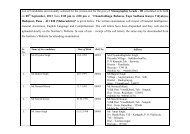
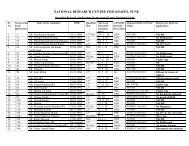

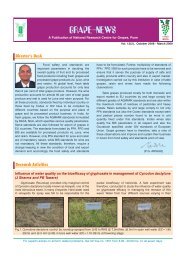

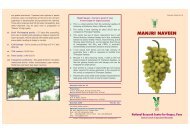
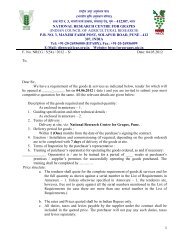



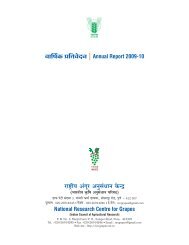
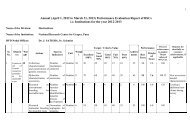
![mj]mJ{V cmcH$m{irM{ (_mBQâ¤>g) oZ`ÃÃU](https://img.yumpu.com/33367555/1/190x127/mjmjv-cmchmirm-mbqag-ozaau.jpg?quality=85)